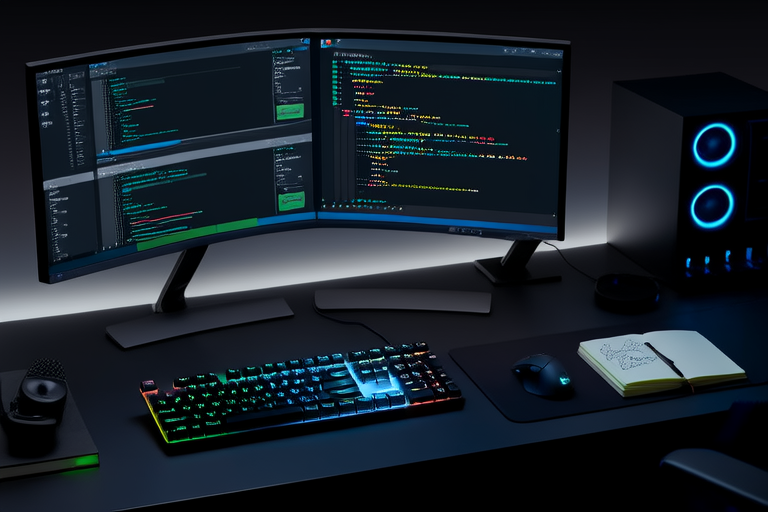“`html
Navigating the Challenges of Cross-Platform Application Development
Introduction
Cross-platform application development refers to the practice of building software that runs seamlessly across multiple operating systems, devices, and environments. In today’s interconnected world, there is an increasing demand for applications that work flawlessly on various platforms such as iOS, Android, Windows, and even web browsers. This approach offers several benefits, including cost efficiency, faster time-to-market, and a broader reach to users. By leveraging cross-platform development, businesses can maximize their investment and reduce the need for separate development teams for each platform.
Understanding Cross-Platform Development
Cross-platform development involves using tools and frameworks that allow developers to write code once and deploy it across multiple platforms. Some of the most popular frameworks include React Native, Flutter, and Xamarin. These tools enable developers to build apps with a shared codebase, reducing redundancy and speeding up the development process. Unlike native development, which requires writing platform-specific code, cross-platform development allows for more flexibility and faster iteration.
The advantages of using these tools over native development are numerous. For instance, developers can save time and resources by reusing code across platforms, leading to faster product launches. Additionally, cross-platform frameworks often provide access to a wide range of pre-built components and libraries, further streamlining the development process.
Key Challenges in Cross-Platform Development
Performance Issues
One of the primary challenges in cross-platform development is ensuring consistent performance across different platforms. Each platform has its own set of hardware specifications, and what works efficiently on one device may not perform as well on another. Developers must carefully optimize their code to account for differences in processing power, memory usage, and battery life.
For example, an app that runs smoothly on a high-end Android device may struggle on a lower-end iOS device due to differences in CPU architecture and graphics processing units (GPUs). To address these issues, developers need to employ techniques such as code profiling, lazy loading, and efficient resource management to ensure optimal performance across all targeted platforms.
UI/UX Consistency
Maintaining a consistent user interface and experience (UI/UX) across different platforms is another significant challenge. Each platform has its own design guidelines and user expectations, and failing to adhere to these can lead to a disjointed user experience. For instance, while iOS users expect a minimalist, button-centric interface, Android users prefer a more gesture-driven, icon-based experience.
Common UI inconsistencies include differences in button placement, font sizes, and color schemes. These inconsistencies can negatively impact user satisfaction and engagement, leading to higher bounce rates and lower retention. To overcome this challenge, developers must adopt a flexible and responsive design approach that adapts well to different screen sizes and resolutions.
Platform-Specific Features
Integrating platform-specific features and functionalities is yet another hurdle in cross-platform development. While some features are available across all platforms, others are unique to specific operating systems. For example, iOS supports features like Face ID and Touch ID, while Android offers advanced camera capabilities and fingerprint sensors. Incorporating these features into a cross-platform app requires careful consideration and planning.
To handle platform-specific features, developers can use plugins or extensions that provide access to native APIs. However, this approach can sometimes compromise the overall design or functionality of the app. Therefore, it is crucial to strike a balance between leveraging platform-specific features and maintaining a cohesive user experience.
Testing and Debugging
Testing and debugging cross-platform applications present unique challenges. Due to the diversity of platforms, devices, and configurations, ensuring that an app works correctly across all targets can be complex. Developers must conduct thorough testing at various stages of the development process, from unit tests to end-to-end tests.
Automated testing tools can help streamline the process, but they cannot replace the value of manual testing. Continuous integration (CI) pipelines can also play a vital role in identifying bugs early in the development cycle. By implementing robust testing strategies and leveraging the right tools, developers can minimize errors and deliver a high-quality product.
Best Practices for Overcoming Challenges
Performance Optimization
To improve performance, developers should focus on optimizing code at both the micro and macro levels. Code profiling tools can help identify bottlenecks and areas for improvement. Lazy loading, where resources are loaded only when needed, can significantly reduce initial load times. Efficient resource management, such as minimizing memory usage and optimizing database queries, can also enhance performance.
Ensuring UI/UX Consistency
A flexible and responsive design is essential for maintaining UI/UX consistency across platforms. Developers should adopt a design system that includes reusable components and style guides. By adhering to platform-specific design guidelines, such as Apple’s Human Interface Guidelines (HIG) and Google’s Material Design, developers can create a cohesive and intuitive user experience.
In addition, using tools like Figma or Sketch can help designers create wireframes and prototypes that adapt well to different screen sizes and resolutions. Regular user testing and feedback can also provide valuable insights for refining the design.
Handling Platform-Specific Features
To effectively integrate platform-specific features, developers can use plugins or extensions that provide access to native APIs. For example, the React Native community offers a wide range of third-party libraries that enable access to platform-specific features. Similarly, Flutter provides plugins for integrating platform-specific functionality.
When incorporating these features, it is important to prioritize user experience over technical complexity. Developers should ensure that platform-specific features enhance the overall functionality of the app without compromising its design or usability.
Effective Testing and Debugging
Thorough testing and debugging are critical for delivering a reliable and bug-free product. Automated testing tools, such as Jest for JavaScript applications or Espresso for Android, can help identify issues early in the development cycle. Continuous integration (CI) pipelines, such as Jenkins or GitHub Actions, can automate the testing process and ensure that code changes are thoroughly evaluated.
Manual testing remains an indispensable part of the process, especially for user interface and user experience (UI/UX) validation. Regular user testing sessions can provide valuable feedback and help refine the final product.
Future Trends in Cross-Platform Development
The future of cross-platform development looks promising, with emerging trends and technologies set to further streamline the process. One of the most exciting developments is the continued advancement of tools and frameworks. For instance, Flutter 3 introduced support for desktop and web applications, expanding the reach of cross-platform development beyond mobile devices.
Additionally, the rise of low-code and no-code platforms, such as OutSystems and AppGyver, is democratizing app development and making it accessible to non-technical users. These platforms offer drag-and-drop interfaces and pre-built components, enabling users to create functional applications with minimal coding knowledge.
The role of artificial intelligence (AI) and machine learning (ML) in enhancing cross-platform development is also gaining traction. AI-powered tools can assist in tasks such as code generation, automated testing, and user experience optimization. As these technologies mature, they are expected to play an increasingly important role in shaping the future of cross-platform development.
Conclusion
Cross-platform application development offers numerous benefits, but it also presents unique challenges that must be addressed to ensure successful deployment. By understanding the key challenges—such as performance issues, UI/UX consistency, platform-specific features, and testing and debugging—developers can adopt best practices and strategies to overcome these obstacles.
As the field continues to evolve, staying informed about new developments and best practices is crucial. The future of cross-platform development holds great promise, with advancements in tools, frameworks, and methodologies likely to further streamline the process. By embracing these trends and continuously refining their approach, developers can create high-quality applications that meet the needs of users across multiple platforms.
“`




